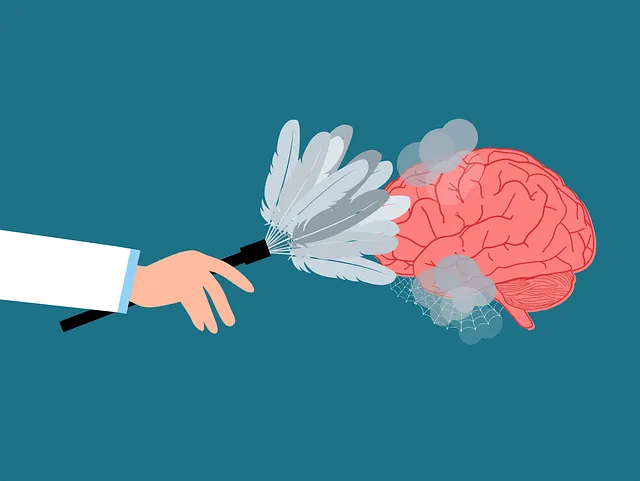Risk assessment is vital for healthcare institutions, especially those with inpatient mental health facilities like Littleton and Kaiser. They compare distinct models of care: Littleton's community-based approach vs. Kaiser's intensive hospital program. Both focus on harm minimization through comprehensive plans, regular reviews, multidisciplinary teams, and tailored interventions. Littleton goes further with continuous improvement, patient feedback integration, and community outreach programs, ensuring holistic mental health support.
“Risk assessment and harm minimization planning are critical components in healthcare, especially within inpatient mental health services. This article explores these strategies through a comprehensive lens, focusing on best practices and real-world applications. We delve into the foundational principles of understanding risk assessment, examining Littleton’s approach compared to Kaiser’s inpatient mental health services. Additionally, we provide practical insights for developing robust harm minimization plans, highlighting implementation strategies for enhanced patient safety and support.”
- Understanding Risk Assessment: The Foundation of Harm Minimization
- Kaiser's Inpatient Mental Health Services: A Closer Look at Littleton's Comparisons
- Developing a Comprehensive Harm Minimization Plan: Strategies and Best Practices
- Implementation and Continuous Improvement: Ensuring Safety and Support for All Patients
Understanding Risk Assessment: The Foundation of Harm Minimization

Risk assessment forms the bedrock upon which effective harm minimization strategies are built. It involves a meticulous process of identifying potential hazards, evaluating their likelihood and impact, and implementing proactive measures to mitigate risks. This foundational step is pivotal in various sectors, particularly within healthcare institutions like Littleton does Kaiser have inpatient mental health facilities. By meticulously assessing risks associated with patient care, staff safety, and institutional operations, these facilities can proactively prevent adverse events and promote positive outcomes.
The significance of risk assessment lies not only in its ability to safeguard individuals but also in its role as a catalyst for improving trauma support services and emotional healing processes. It empowers mental health policy analysts and advocates to delve into Mental Health Policy Analysis and Advocacy, ensuring that evidence-based practices are implemented to address systemic risks. This proactive approach not only minimizes harm but also fosters a culture of continuous improvement within healthcare settings.
Kaiser's Inpatient Mental Health Services: A Closer Look at Littleton's Comparisons

Littleton’s comparison with Kaiser’s Inpatient Mental Health Services reveals key differences in approach and resources. While both organizations prioritize mental wellness, their models of care vary significantly. Littleton focuses on community-based support and outpatient services, emphasizing early intervention and prevention strategies for risk assessment in mental health professionals. In contrast, Kaiser’s inpatient program offers a more intensive, hospital-based model, catering to individuals requiring immediate and prolonged treatment for severe mental health conditions.
The comparison highlights the diverse needs within the field of mental health care. As these organizations navigate the complex landscape of mood management, understanding their unique strengths and limitations can inform best practices and improve outcomes for those seeking support. This discussion underscores the importance of evaluating different approaches to risk assessment and harm minimization planning in order to meet the evolving demands of the mental health professional community.
Developing a Comprehensive Harm Minimization Plan: Strategies and Best Practices

Developing a comprehensive harm minimization plan is an essential step for organizations, especially those providing mental health services, like Littleton does Kaiser have inpatient mental health care. This process involves identifying potential risks and implementing strategies to mitigate them effectively. Best practices include conducting thorough risk assessments, involving multidisciplinary teams, and tailoring interventions to individual needs. Regular reviews and updates ensure the plan remains relevant and effective in managing risks associated with mental health treatment.
By integrating self-esteem improvement initiatives, depression prevention programs, and stress reduction methods, healthcare providers can create a supportive environment that fosters positive outcomes. These strategies not only address immediate concerns but also empower individuals to develop coping mechanisms for long-term well-being. A well-designed harm minimization plan, therefore, becomes a cornerstone in enhancing patient safety and overall mental health services delivery.
Implementation and Continuous Improvement: Ensuring Safety and Support for All Patients

At Littleton, Kaiser’s inpatient mental health services aim to go beyond initial treatment, emphasizing continuous improvement and comprehensive support. This involves regularly reviewing and updating harm minimization plans based on patient feedback and evolving research in mental wellness. By fostering an environment that encourages open dialogue and incorporates innovative practices like mindfulness meditation through their Community Outreach Program Implementation, they ensure a dynamic approach to patient care.
This commitment extends beyond the walls of the hospital, as Littleton Kaiser seeks to integrate community resources and promote mental health awareness. This holistic strategy ensures that patients receive tailored support, catering to their unique needs and challenges, thereby enhancing their journey towards optimal mental wellness.
In light of the above discussions, it’s evident that both Kaiser and Littleton employ comprehensive strategies in their inpatient mental health services. Risk assessment and harm minimization planning are pivotal in ensuring patient safety and well-being. While Kaiser’s approach leans towards a robust, structured framework, Littleton excels in personalized care and community integration. Ultimately, adopting best practices from both models can revolutionize mental healthcare, fostering environments that support recovery and minimize risks for all patients. Understanding these strategies is crucial to navigate the landscape of inpatient mental health services and enhance patient outcomes.






